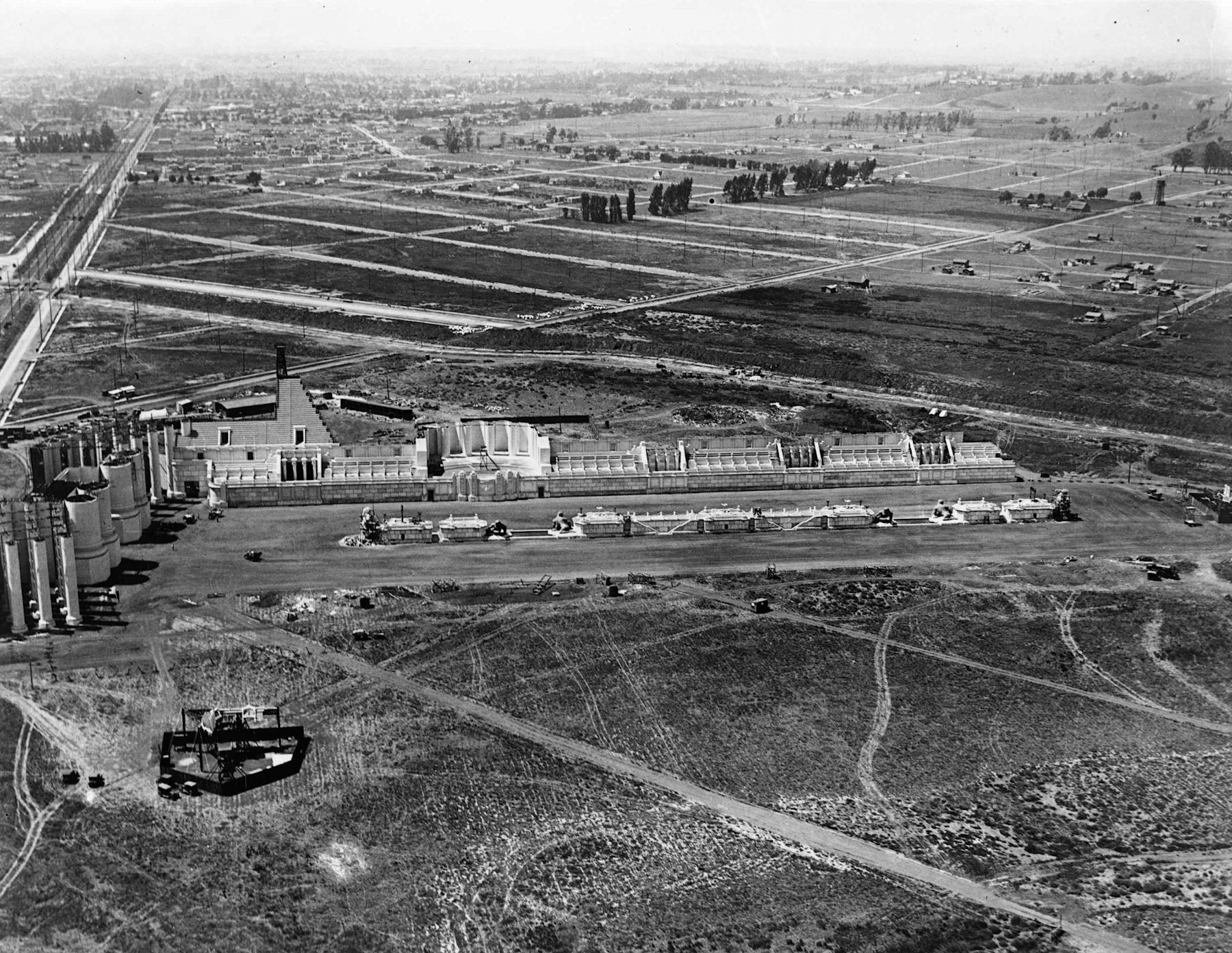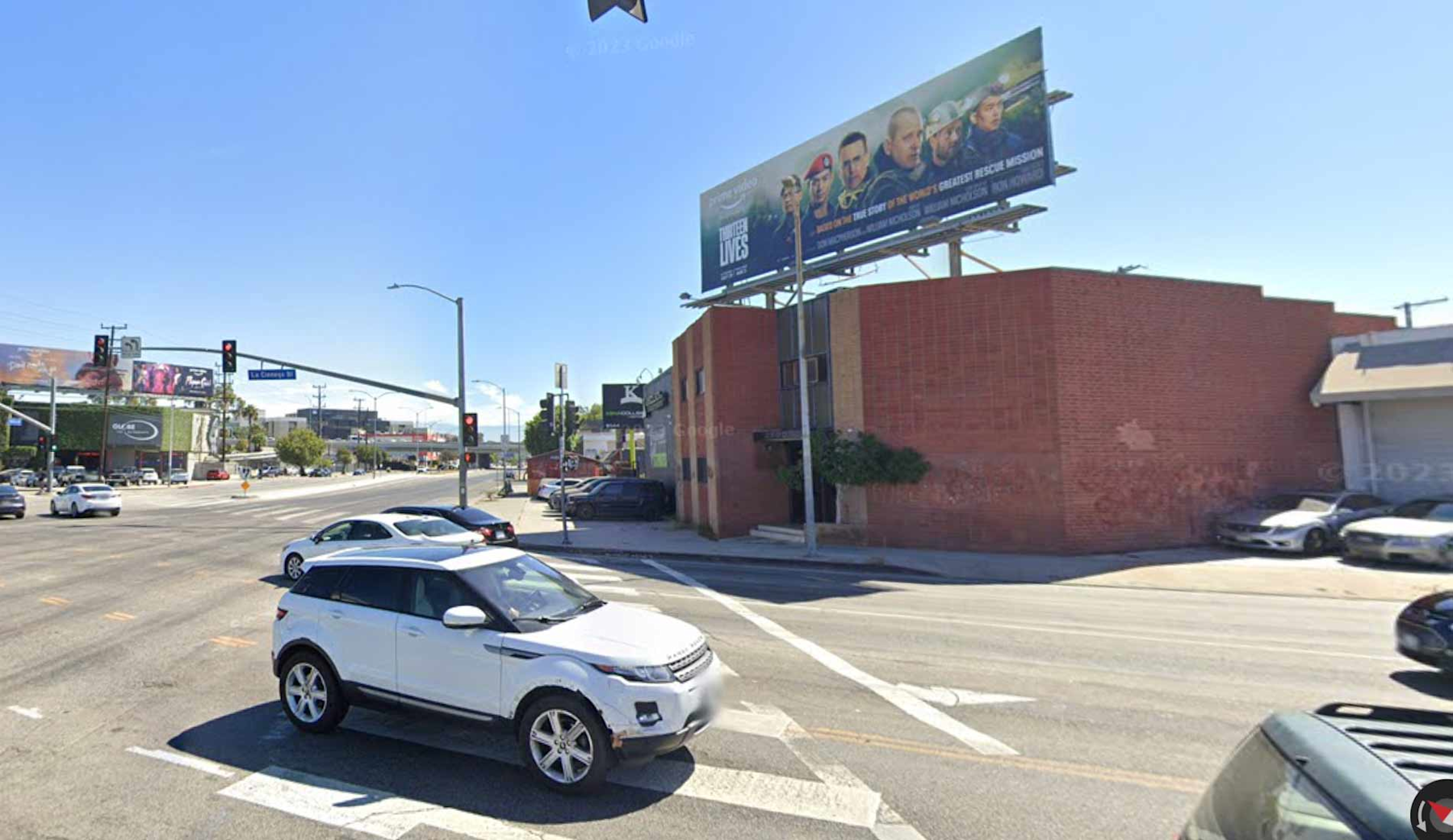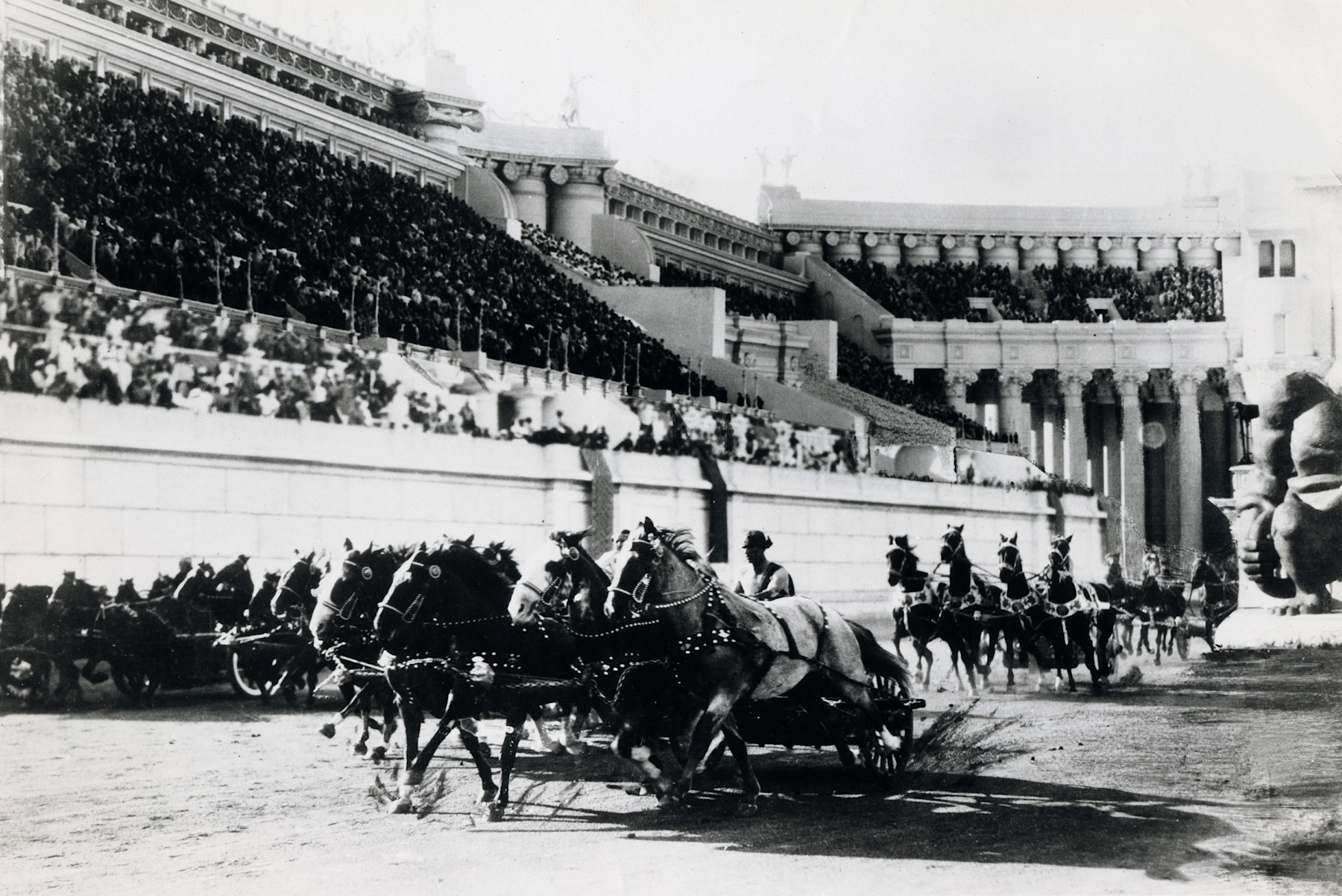Rome—or so goes the old adage—wasn’t built in a day.
It makes sense, then, that neither was the monumental Circus Maximus set built for the epic, blockbuster silent film, Ben-Hur: A Tale of the Christ (1925).


Today, the Culver City, California intersection of La Cienega and Venice Boulevards is relatively nondescript, packed with vast lanes of traffic and various mostly small businesses nearby. But nearly a century ago in that same spot, rising amidst farmlands and other undeveloped lots, stood an enormous, ephemeral, chariot-racing arena, created to stand in for the ancient Roman Empire’s largest and most famous stadium. Some 800 people worked for more than four months for MGM in order to create a working racetrack and its accompanying grandstands, massive sculptures, and tall columns.
The resulting 13 minutes of film—the chariot race sequence—out of an overall run time of two hours and 23 minutes, was consequential in a number of ways across the film industry. At the time, shooting on location was all the rage and Ben-Hur began photography in Italy. The production suffered from long delays, underwhelming dailies, and deaths (more than 100 horses, and at least one person).
What had begun as a Goldwyn Pictures project in 1923 turned into an MGM film following a 1924 corporate merger. Under MGM’s Louis B. Mayer and Irving Thalberg, Ben-Hur’s original director, writer, and lead actor were replaced, and in came director Fred Niblo and actor Ramon Novarro. Shooting in Italy was halted, and the chariot scene re-slated for stateside. When the film turned out to be a box office sensation, MGM and other studios took notice of this cautionary tale of filming abroad and re-focused filmmaking on their Los Angeles-area lots.


Ben-Hur also showcased the utility of deploying dozens of cameras to capture action sequence and real-time reactions. A trade magazine of the day wrote that the previous record for most cinematographers involved in one scene was 17. Ben-Hur’s chariot shots employed 42, who collectively recorded more than 200,000 feet of film—750 feet of which found its way onto the screen. The race featured 12 teams of four horses each, and there were thousands of extras (each of whom were paid $5 plus lunch for the day) in the stands. MGM gave all their productions the day off to attend the shoot, and bold-faced names who showed included Douglas Fairbanks, Mary Pickford, Harold Lloyd, Marion Davies, and Joan Crawford.
Ben-Hur was always going to be complicated. The best-selling novel upon which it was based is 620 pages. The popular Broadway play that followed the book required treadmills and eight horses. The plot of the film is complicated enough that the TCM.com synopsis is 1,377 words. And the film’s trailer boasts of having “one hundred and fifty thousand people in the cast!” in scenes ranging from a battle at sea, to a desert crossing, to bustling markets.
All told, Ben-Hur cost nearly $4 million to make ($70.6 million in 2023 dollars). It grossed $9.4 million ($165.9) and is credited with boosting then-nascent MGM into a longtime leading studio. A 1959 remake went on to win 11 Academy Awards.